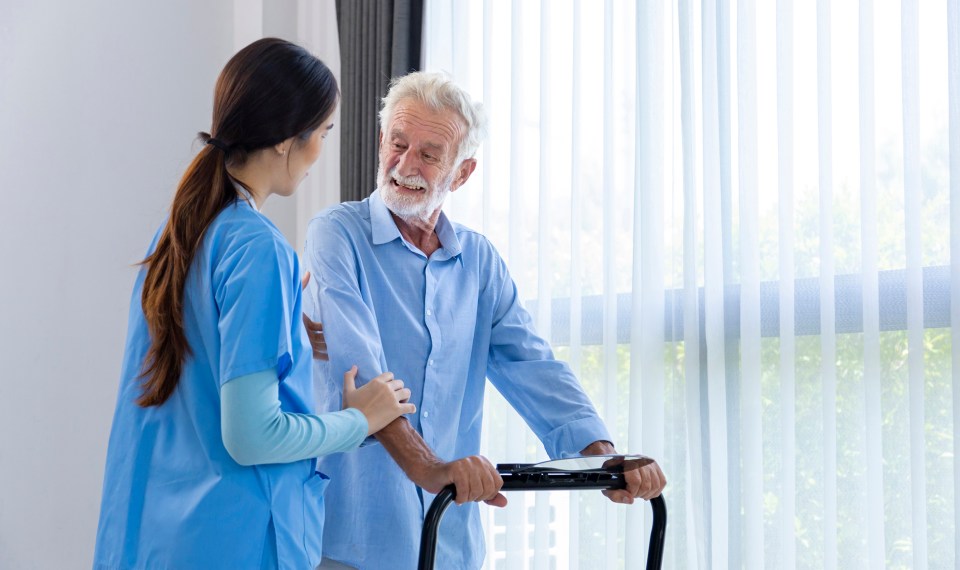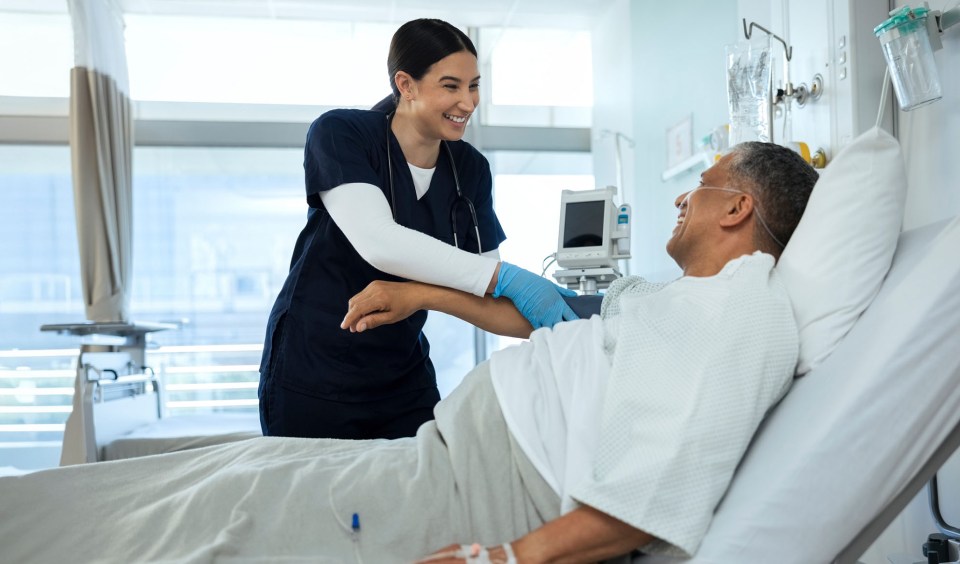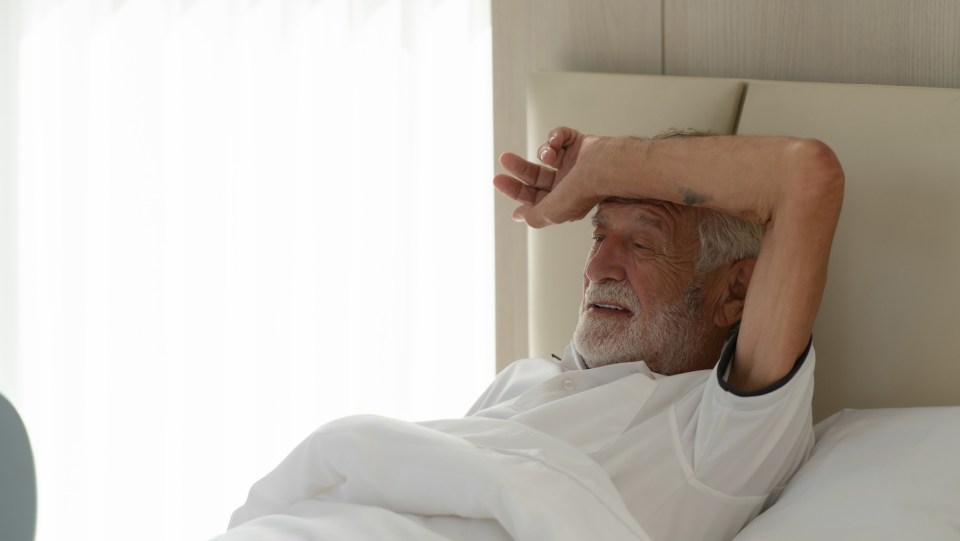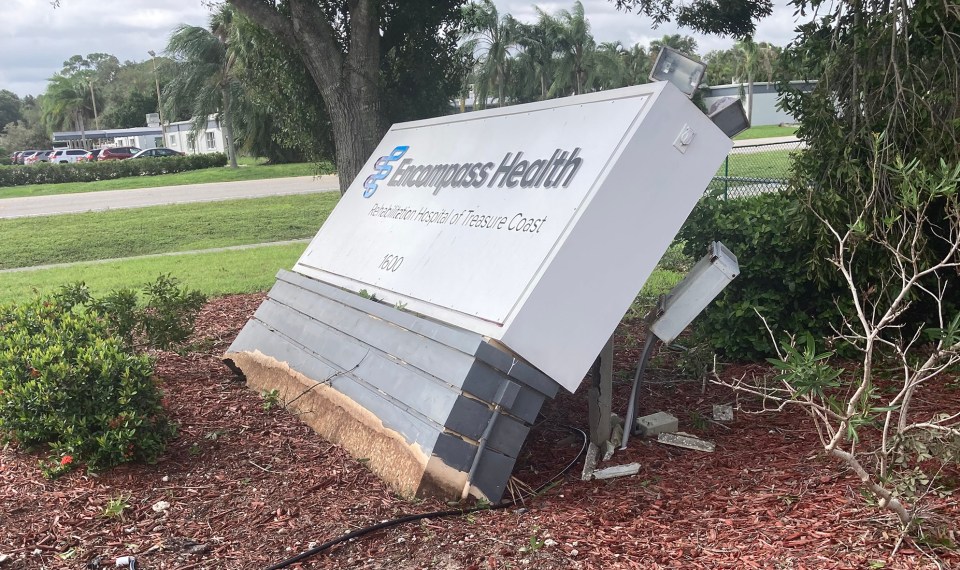A left ventricular assist device (LVAD) is a mechanical pump implanted into individuals with end-stage heart failure. The device helps the lower left chamber of the heart pump blood.
The goal of an LVAD is to increase an individual’s organ functions, strength, activity tolerance and overall quality of life. It can serve as a bridge for people awaiting a heart transplant.
LVAD surgery can be intense, and patients may require additional care to get them back to their daily living, as well as management of their new device. This is where inpatient rehabilitation and occupational therapy can help.
Inpatient rehabilitation provides a hospital level of care with intensive therapy, including occupational and physical therapy.
Occupational therapy practitioners can offer a distinct perspective to assess and address not only the physical deficits these patients experience, but also the psychosocial and emotional concerns limiting functional performance and occupational engagement.
Strategies for Caring for Patients with LVADs
Having an LVAD can significantly change the way an individual completes their ADLs and IADLs. Occupational therapists and certified occupational therapy assistants can provide meaningful education on remedial and compensatory strategies to promote psychosocial well-being and functional independence for those with LVADs.
The primary focus of therapy for this population in inpatient rehabilitation is to address self-care, mobility, strength, endurance and device management. Additionally, educating patients on sternal precautions is imperative to minimize the risk of dislodging the device.
Strategies OTs and COTAs could implement and educate on to improve quality of life, safety and independence and management of their device include:
Bathing
Protection of the drive line site after implantation is vital to prevent infection. Directly after receiving an LVAD patients must sponge bathe and use a shampoo shower cap or a handheld shower head to wash their hair over a sink or tub. Once the patient is given medical clearance to shower by their LVAD implanting team—typically at least three to six months post-implant—an OT can help the patient learn to apply a waterproof dressing for their driveline site and use a specific LVAD shower bag to protect their device.
Sex and Intimacy
Intimacy is an important IADL for many patients. Educating patients on how to avoid pressure on the LVAD device entry sites and protecting the equipment is a must. Medical clearance should be discussed with their implanting LVAD team prior to engaging in intercourse.
Travel
When traveling outside the home, the OT should inform the patient of what they will need. A person with an LVAD should bring their “to-go bag,” with at least two full batteries, back up controller and two extra battery clips. Education on travel safety is imperative and includes avoiding metal detectors, obtaining travel clearance by their physician, traveling in the back seat in case of airbag deployment and being aware of local hospitals with LVAD programs in case one is needed.
Sleeping
Sleep is a vital IADL, especially when recovering from a cardiac procedure. An occupational therapist should review their sleeping positions for comfort and protection of the device. To protect the driveline site, sleeping in a prone position is not permitted. However, patients can sleep on their back and sides. The patient should also switch their power source from batteries to their mobile power unit when sleeping to ensure they do not sleep through a potential low battery alarm.
Endurance and Strengthening
Studies show that patients with an LVAD who perform 45 minutes of hospital based high-intensity muscle training three to five days per week experience an increase in endurance, strength and quality of life. In the inpatient rehabilitation setting, patients are required to receive at least three hours of therapy a day, five days a week.
OTs in this setting can provide individualized exercises appropriate for each patient and educate them on self-monitoring, so they can understand their own exercise tolerance.
Sessions should begin with a gradual warm-up followed by a prolonged cool down. This allows adequate time for circulatory adjustments. Initial plans could include walking, static cycling, standing hamstring curls, leg presses, bicep curls, core stability exercises and arm ergometry.
As endurance levels and exercise tolerance improve, increase the intensity of the workout. Additionally, increasing fine motor control is imperative for patients to manage their device independently.
Psychosocial Elements and Concerns
Following cardiac episodes, many individuals are likely to experience various psychosocial limitations including depression, anxiety, desperation and stress.
Heart surgeries are stressful and likely even traumatic events for patients, and can result in the onset of anxiety, depression, a diminished quality of life and altered roles and routines for many. Feelings of fear, frustration, helplessness and low self-esteem following cardiac events and surgeries can lead to resistance to the rehabilitation process, low motivation, prolonged inactivity, social isolation and even heightened mortality rates following discharge.
Though these psychosocial factors directly impact the etiology, prognosis and recovery process of cardiac illness, they are too often overlooked as the focus shifts to medical management or physical determinants of cardiac health. OTs are well suited to assess and address these factors during an inpatient rehabilitation stay.
If negative psychosocial experiences are observed, reported or suspected, OTs should consider the following measures to better target areas of concern:
- Therapeutic use of self
- Motivational interviewing
- Canadian Occupational Performance Measure
- Hospital Anxiety and Depression Scale
- Hamilton Rating Scale for Depression
- Stress Management Questionnaire
- Satisfaction with Life Scale
- Patient Health Questionnaire-9
- Quality of Life Visual Analog Scale
- The Short Form Health Survey
Addressing the mental and emotional concerns of patients recovering from LVAD placement or other cardiac-related conditions can take many forms. Below are a few interventions occupational therapists could facilitate to combat some of the negative psychosocial experiences:
|
Area of Concern |
Intervention Suggestions |
|
Stress related to ADL, IADLs, roles and daily routines |
|
|
Depression/Low Motivation |
|
|
Low Confidence in Abilities |
|
|
Anxiety and Fear |
|
|
Quality of Life | Exploration of new or modified engagement in:
|
After an LVAD placement surgery, patients will need not only medical care, but also strategies for managing their new device and performing activities of daily living. Occupational therapy practitioners in the inpatient rehabilitation setting are well-equipped to help this population accomplish both, while also helping with the emotional and mental side effects.
Encompass Health occupational therapists Abigail Adame, Brittany Hill, Jessica O’Brien and Joshua Million contributed to this post and research.
References:
About Your ID Card. (2023). Abbott. Retrieved June 10, 2023, from https://www.cardiovascular.abbott/us/en/patients/your-id-card.html
Åström, M., Lwin, Z. M. T., Teni, F. S., Burström, K., & Berg, J. (n.d.). Use of the visual analogue scale for health state valuation: a scoping review. Quality of Life Research, 32(10), 2719–2729. https://doi.org/10.1007/s11136-023-03411-3
Callus, E., Pagliuca., S., Bertoldo, E. G., Fiolo, V., Jackson, A. C., Boveri, S., De Vincentiis, C., Castelvecchio, S., Volpe, M., & Menicanti, L. (2020). The monitoring of psychosocial factors during hospitalization before and after cardiac surgery until discharge from cardiac rehabilitation: A research protocol. Frontiers in Psychology, 11(2202), 1-13. doi: 10.3389/fpsyg.2020.02202
Chandra, N. R., & Suplicki, L. (2020). Occupational Therapy’s Role with Ventricular Assist Devices and the Promotion of Travel Protocols. The VAD Journal: The Journal of Mechanical Assisted Circulation and Heart Failure, 6(1). https://doi.org/10.11589/vad/e2020617
Cleveland Clinic Medical Professionals. (2023, February 15). What is a left ventricular assist device?. Cleveland Clinic. http://my.clevelandclinic.org/health/treatments/17192-left-ventricular-assist- devices-mechanical-circulatory-support-mcs
COPM. (2023). COPM. Retrieved December 21, 2023, from https://www.thecopm.ca/
Grabovac, S. (2011). Occupational therapy with people affected by cardiovascular disease. Kardio List, 6(11), 303-308.
Hamilton, M. (1960). Hamilton depression rating scale. Journal of Neurology, Neurosurgery, and Psychology, 23, 56–62.
Jayaraman, T. (2023). Stress Management Questionnaire. Scribd. Retrieved December 21, 2023, from https://www.scribd.com/doc/55025282/Stress-Management-Questionnaire
Kornblau, B., Oliveira, D., & Mbiza, S. (2020). Measuring quality of life (QOL) through participation: A synthesis of multiple qualitative studies on occupational autonomy. American Journal of Occupational Therapy, 74(1). doi: 10.5014/ajot.2020.74S1-PO1724
Moreno-Suarez, I., Lieu, S., Dembo, L. G., Larbalestier, R., & Maiorana, A. (2020). Physical activity is higher in patients with left ventricular assist device compared with chronic heart failure. Medicine & Science in Sports & Exercise, 52(1), 1–7. https://doi.org/10.1249/mss.0000000000002104
Motivational interviewing. (2022, June 6). Psychology Today. https://www.psychologytoday.com/us/therapy-types/motivational-interviewing
MyLVAD Foundation, LTD. (n.d.-a). LVAD Travel Tips | MyLVAD. MyLVAD. Retrieved June 10, 2023, from https://www.mylvad.com/patients-caregivers/lvad-lifestyle/living-lvad/lvad-travel-tips
MyLVAD Foundation, LTD. (n.d.). Sleeping and Showering with an LVAD | MyLVAD. MyLVAD. https://www.mylvad.com/patients-caregivers/lvad-lifestyle/living-lvad/sleeping-and-showering
MyLVAD Foundation, LTD. (n.d.-c). Sleeping and Showering with an LVAD | MyLVAD. MyLVAD. Retrieved June 10, 2023, from https://www.mylvad.com/patients-caregivers/lvad-lifestyle/living- lvad/sleeping-and-showering-lvad
My LVAD Foundation, LTD. (n.d.-d). LVAD Daily Maintenance | MyLVAD. MyLVAD. https://www.mylvad.com/patients-caregivers/lvad-lifestyle/living-lvad/lvad-daily- maintenance
MyLVAD Foundation, LTD. (n.d.-e). LVAD Do’s and Don’ts | MyLVAD. MyLVAD. https://www.mylvad.com/patients-caregivers/lvad-lifestyle/living-lvad/lvad-dos-and-donts
Severin, R., Sabbahi, A., Ozemek, C., Phillips, S., & Arena, R. (2019). Approaches to improving exercise capacity in patients with left ventricular assist devices: An area requiring further investigation. Expert Review of Medical Devices, 16(9), 787–798. https://doi.org/10.1080/17434440.2019.1660643
Spitzer, R. L. S., Williams, J. B. W. W., & Kroenke, K. K. (n.d.). Patient health questionnaire-9 (PHQ-9). PHQ-9.
Stanford Health Care. (2023). Left ventricular assist device. https://stanfordhealthcare.org/medical-treatments/l/lvad.html
Stern, A. F. (2014). The Hospital Anxiety and Depression scale. Occupational Medicine, 64(5), 393–394. https://doi.org/10.1093/occmed/kqu024SWLS – Ed Diener, Subjective Well-Being. (2009). Ed Diener. http://labs.psychology.illinois.edu/~ediener/SWLS.html
Traveling with an LVAD. (2023). Abbott. Retrieved June 10, 2023, from https://www.cardiovascular.abbott/us/en/patients/treatments-therapies/heartmate- lvad-therapy/living-with-lvad-therapy/traveling.html
UCSF Health. (2022). FAQ: Living with a Ventricular Assist Device (VAD). ucsfhealth.org. https://www.ucsfhealth.org/education/faq-living-with-a-ventricular-assist-device#2
36-Item Short Form Survey from the RAND Medical Outcomes Study. (n.d.). https://www.rand.org/health-care/surveys_tools/mos/36-item-short-form.html
The content of this site is for informational purposes only and should not be taken as professional medical advice. Always seek the advice of your physician or other qualified healthcare provider with any questions you may have regarding any medical conditions or treatments.



